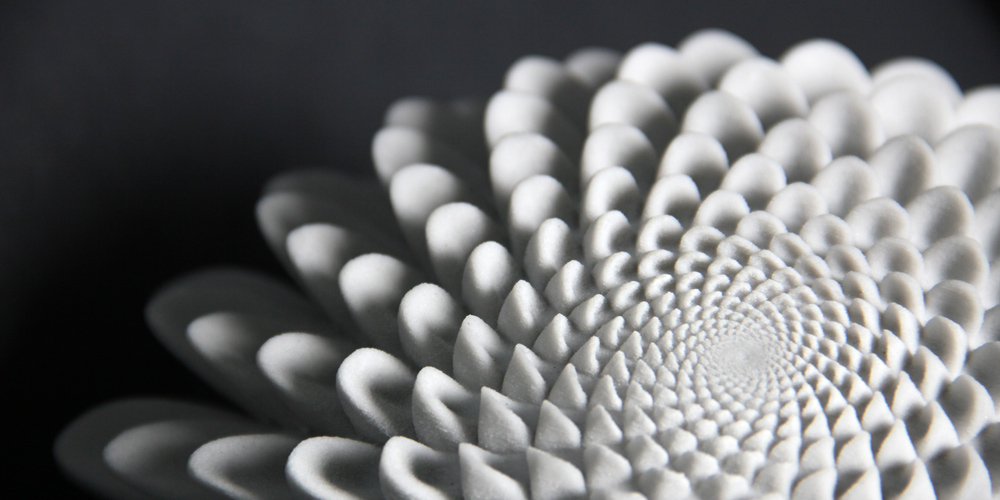Nomination
Blooms are 3D printed sculptures designed to animate when spun under a strobe light. Unlike a 3D zoetrope, which animates a sequence of small changes to objects, a bloom animates as a single self-contained sculpture. The bloom’s animation effect is achieved by progressive rotations of the golden ratio, phi Φ, the same ratio that nature employs to generate the spiral patterns we see in pinecones and sunflowers. The rotational speed and strobe rate of the bloom are synchronized so that one flash occurs every time the bloom turns 137.5° (the angular version of phi). Each bloom’s particular form and behavior is determined by a unique parametric seed I call a phi-nome (/fi nöm/). If you count the number of spirals on any of these blooms you will find that they are always Fibonacci numbers. For this video, rather than using a strobe, the camera was set to a very short shutter speed in order to freeze individual frames of the spinning sculpture.
Credits
Video: John Edmark
Creative Consultant: Terrence Tessaro McArdle
Filming: Charlie Nordstrom
Music: Bryan Barcinas
Supported by AutoDesk Artists-in-Residence Program
John Edmark (US) is a lecturer in the Design Program at Stanford University. He is the inventor of the Helicone, an interactive kinetic toy, and Blooms, a new type of sculpture that animates when spun under a strobe light. He has designed interactive exhibits for museums including the Exploratorium, the San Jose Museum of Art, the Phaeno Science Center, and the Swiss Science Center Technorama. His other interests include hyper-stereo photography, stop-motion animation, natural pattern formation, and Tuvan throat singing.



